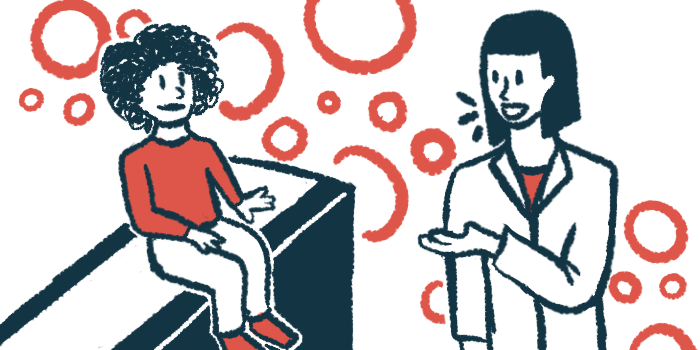Neurologists appear to be more comfortable managing Rett: Survey
US survey highlights need for better Rett education, support for doctors

Among experienced physicians, neurologists are reportedly more comfortable than pediatricians in treating people with Rett syndrome, according to a survey conducted in the U.S.
Neurologists also consider more tools than pediatricians do when diagnosing patients with Rett, data show.
These findings highlight the need for “better education and support for pediatricians, who are among the main care providers for individuals with RTT [Rett],” researchers wrote.
The study, “Real-world clinical management of individuals with Rett syndrome: a physician survey,” was published in the Journal of Medical Economics. The research was funded by Acadia Pharmaceuticals, which markets Daybue (trofinetide), the first U.S.-approved treatment for Rett, in North America.
Rett syndrome is chiefly caused by mutations in the MECP2 gene, which codes for a protein of the same name. The MeCP2 protein is thought to help regulate how DNA is “read,” especially in brain cells, which is critical for normal development.
Most diagnoses based on early clinical signs of development regression
Despite a clear genetic cause, the diagnosis of Rett is mostly based on early clinical signs of development regression, such as loss of purposeful hand use and spoken language.
Rett patients can show a variety of clinical symptoms, which can complicate diagnosis. Moreover, such variability also poses difficulties in assessing treatment success.
More knowledge about Rett management practices may help identify “therapeutic gaps and unmet needs, which could in turn inform the development of novel pharmacological treatments,” the scientists wrote.
To understand the real-world management strategies for Rett, a team of researchers conducted interviews and a survey with 100 neurologists or pediatricians managing Rett syndrome patients in the U.S.
In total, the survey included 51 neurologists and 49 pediatricians. Neurologists had treated significantly more Rett patients throughout their career than pediatricians, a median of 12 vs. 5.
More neurologists reported being ‘very comfortable’ treating Rett
Significantly more, about 31%, of neurologists reported being “very comfortable” managing Rett patients compared with 4% of pediatricians.
Among the physicians with experience in diagnosing Rett, most (91%) did so by evaluating clinical symptoms. Genetic testing was also commonly used (by 86%). Neurologists and pediatricians did not differ significantly in their use of these two diagnostic approaches.
In contrast, neurologists were significantly more likely to use the 2010 consensus diagnostic criteria for Rett than pediatricians, 54% vs. 29%.
Overall, 50% of neurologists used the diagnostic triad — the 2010 consensus criteria, clinical symptoms, and genetic testing — compared with 23% of pediatricians.
A combination of symptom evaluation and genetic testing was the diagnostic method of choice for 57% of pediatricians and 37% of neurologists. Diagnosis based on symptoms alone was reported by 4% of neurologists and 11% of pediatricians.
Results also showed most physicians (87%) typically considered an alternative diagnosis, most often autism spectrum disorder. Other diagnoses considered included non-specific developmental delay and Angelman syndrome.
Overriding goal for doctors was to improve life quality for patients, caregivers
The most important treatment goals for physicians was to improve the quality of life for patients, followed by that of their caregivers. Maintaining function for as long as possible and managing the behavioral and social issues of Rett patients also were important goals.
The majority of physicians (60%) used clinical practice guidelines to monitor patient progress. Up to 34% used other measures, including the Rett clinical severity scale, the Rett Syndrome Behaviour Questionnaire, and the Motor Behavior Assessment scale.
Patients’ age, disease stage, and patient or family preference were key factors for most clinicians when deciding on the best course of treatment.
The top three symptoms that physicians most often treated were behavioral issues (67%), epilepsy and seizures (63%), and feeding problems (33%). Medications were commonly selected to treat behavioral issues, epilepsy/seizures, constipation, and other issues. Occupational, speech, and physical therapy were most often used for feeding problems.
Finally, when questioned about the greatest areas of unmet need for Rett, a sizable portion of physicians mentioned the lack of novel therapies and the dependence on symptom-specific management.
With growing research on the development of new therapies, “it will be critical for future studies to identify and describe clear metrics of treatment success, especially in terms of the burden on individuals with RTT and their caregivers,” the study concluded.








